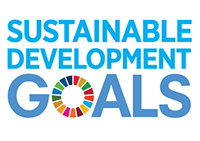4.5.1 Parity Indices : Primary School
Definition
The ratio of girls to boys enrolled at primary level in public and private schools. A parity index greater than one indicates there are more girls enrolled than boys. Conversely, an index less than one indicates there are less girls than boys enrolled in primary school education.
Data Source(s)
UNESCO Institute for Statistics. Retrieved from “http://uis.unesco.org/en/country/tt“
 4.5.1 Parity Indices : Primary School in the Sustainable Development Goals
4.5.1 Parity Indices : Primary School in the Sustainable Development Goals
Click on the SDG to reveal more information
4. Ensure inclusive and quality education for all and promote lifelong learning
Obtaining a quality education is the foundation to improving people’s lives and sustainable development. Major progress has been made towards increasing access to education at all levels and increasing enrolment rates in schools particularly for women and girls. Basic literacy skills have improved tremendously, yet bolder efforts are needed to make even greater strides for achieving universal education goals. For example, the world has achieved equality in primary education between girls and boys, but few countries have achieved that target at all levels of education.
Related 4.5.1 Parity Indices : Primary School Targets
By 2030, eliminate gender disparities in education and ensure equal access to all levels of education and vocational training for the vulnerable, including persons with disabilities, indigenous peoples and children in vulnerable situations